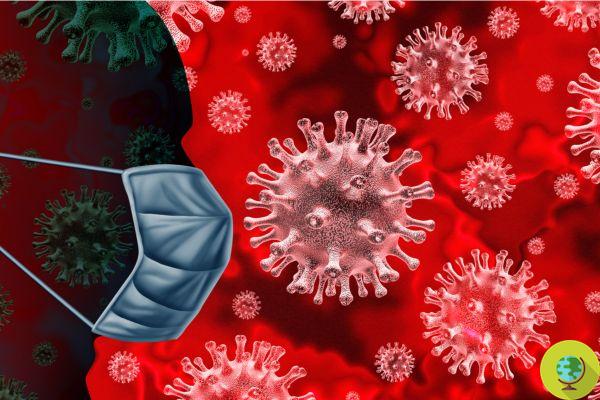
Even asymptomatic people can transmit Covid-19. Van Kerkhove of the WHO better clarifies his previous statement based on known studies
Don't store avocado like this: it's dangerousOnly yesterday we reported the statement of the WHO expert who explained at the press conference how the spread of the coronavirus by asymptomatics would be "very rare". Now, given the uproar and confusion caused by the news, the same official from the World Health Organization was keen to clarify that it is possible to spread Covid-19 even in the absence of symptoms.
The myth of the asymptomatic seemed to have completely faded away, after the words spoken in the press conference by Mary Van Kerkhove. The WHO official, responding to a question on the subject, had stated that, from the analysis of a series of data (from the countries that had worked most on tracing contacts to limit infections) it emerged that, only in rare cases, the asymptomatic actually contribute to the spread of the virus.
On that occasion, however, he also made it clear that it is very difficult to establish with certainty whether a person is completely asymptomatic. Casuistry is obviously complex. In fact, those who have contracted the coronavirus may not perceive changes in their state of health but may still have some mild symptoms.
The myth of the asymptomatics disappears. For the WHO, the spread of the coronavirus without symptoms is "very rare"
After these declarations, however, there has been a lot of confusion and scientists around the world pushed for clarity on the matter right away.
Van Kerkhove herself had to intervene who yesterday said his assessment that asymptomatic spread is "very rare" was based on some studies that may not have been peer-reviewed. Therefore, what was initially stated does not reflect a change in WHO guidelines.
As Van Kerkhove stated:
“I was answering a question and not expressing a WHO position. I used the word 'very rare' and there was a misunderstanding because I seemed to say that asymptomatic transmission is globally very rare. While I was referring to a limited data set "
Live on #COVID19 transmission with @DrMikeRyan & Dr @mvankerkhove. #AskWHO https://t.co/k1eZI2l4ML
— World Health Organization (WHO) (@WHO) June 9, 2020
Van Kerkhove stated that there is a wide range of mathematical models of asymptomatic diffusion. WHO estimates that around 16% of people with coronavirus never develop symptoms, but they may actually be able to spread the virus. And he then added:
“We need to differentiate what we know, what we don't know and what we are trying to understand. What we know about the transmission of Covid-19 is that the infected develop symptoms, but some of them don't. We know that the majority of infections occur from someone having symptoms to other people through infected saliva droplets. But there is a proportion of people who do not develop symptoms and we do not yet know how many there are, it could be 6% to 41% of the population that becomes infected, according to estimates. We know that some asymptomatic people can transmit the virus and what we need to clarify is how many are asymptomatic and how many of these transmit the infection. What I said yesterday at the press conference referred to small published studies ”.
Also CDC Americans spoke on the matter yesterday, explaining that there are two groups of people with the virus who could be contagious even if they show no symptoms, such as fever, cough or shortness of breath. Some are asymptomatic and they never develop symptoms, others do presymptomatic, that is, they are about to develop symptoms. It is often impossible for a person to know which group he really is in. Then there are also i mildly symptomatic (i.e. those who develop only a few symptoms).
The issue is still debated, however, we will probably know the truth about asymptomatics only over time and after further studies.
Sources of reference: WHO / CDC
Read also:
Gloves, comes around the WHO: 'Do not use them even in the supermarket, they increase the risk of infections'
The WHO confirms: the coronavirus is not transmitted by air, but only by saliva droplets


























